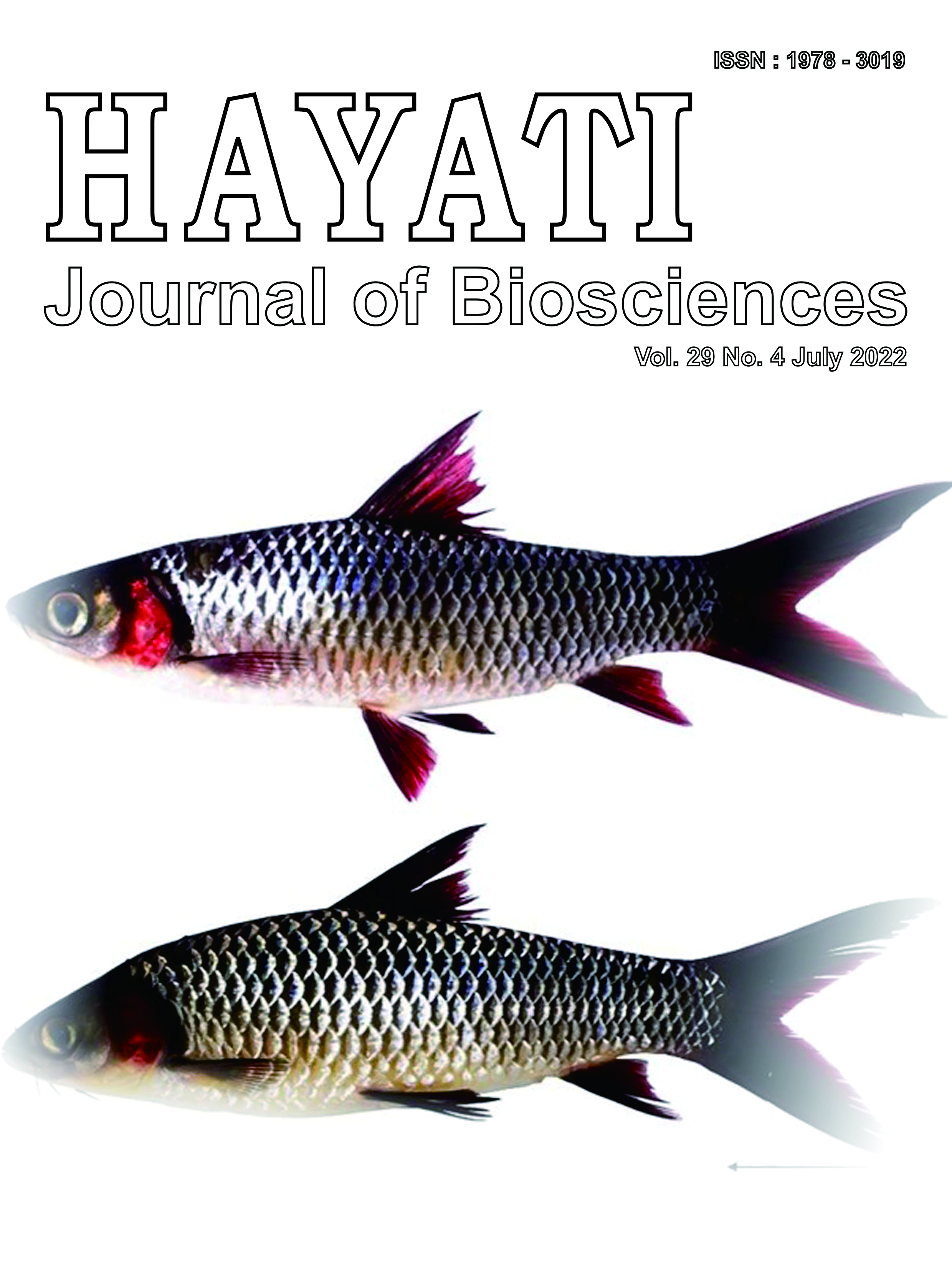Ethanol Productivity of Ethanol-Tolerant Mutant Strain Pichia kudriavzevii R-T3 in Monoculture and Co-culture Fermentation with Saccharomyces cerevisiae
Abstract
We previously developed ethanol-tolerant P. kudriavzevii R-T3 (P.ku R-T3) mutant from its parental strain P.ku R-WT by evolutionary adaptation method. Hence, we further analyze the ethanol productivity of the particular isolates in a monoculture and co-culture with industrial yeast Saccharomyces cerevisiae BY4741 at various inoculum ratio. Based on the spot assay, R3 mutant yeast showed better cell viability under 10% ethanol stress than the wild type, potentially due to the high expression level of PKINO1 gene involved in the synthesis of inositol. In the monoculture fermentation, S. cerevisiae could use glucose, while P.ku could use mixed glucose and xylose as carbon sources for ethanol fermentation. P.ku R-T3 performed the most potential ethanol kinetics parameters, including the highest ethanol production (10.10 g/L), ethanol productivity (0.21 g/L/h), and fermentation efficiency (84.36%). Upscaling the inoculum of P.ku R-T3 by ten times resulted in 10% higher ethanol production. However, the highest substrate utilization rate did not indicate an increase in ethanol production. Indeed, P.ku R-T3 showed a low mixed substrate use but produced higher ethanol production than S. cerevisiae, as much as 21-31%, depending on the initial inoculum. Interestingly, the co-culture of P.ku R-T3 and BY4741 did not substantially produce higher ethanol production than the monoculture technique. About 30% reduction of ethanol production was found by co-culturing BY4741 with P.ku R-T3 than P.ku R-T3 alone. Taken together, the monoculture fermentation of P.ku R-T3 remains the promising fermentation technique than that of the co-culture with industrial yeast S. cerevisiae.
Downloads
Copyright (c) 2022 Nurfadhilla Rahmadhani, Rika Indri Astuti, Anja Meryandini

This work is licensed under a Creative Commons Attribution-NonCommercial 4.0 International License.
HAYATI J Biosci is an open access journal and the article's license is CC-BY-NC. This license lets others distribute, remix, tweak, and build upon author's work, as long as they credit the original creation. Authors retain copyright and grant the journal/publisher non exclusive publishing rights with the work simultaneously licensed under a https://creativecommons.org/
10.1590/0001-3765202420230633
10.1051/bioconf/202414601095
10.1007/s12010-023-04554-2
10.4308/hjb.31.2.221-228
10.3390/catal13071093

























.png) IPB University
IPB University Department of Biology
Department of Biology The Indonesian Biological Society
The Indonesian Biological Society 

